Dwight D. Eisenhower Took Extra Measures to Ensure the Holocaust Was Never Forgotten
Dwight D. Eisenhower viewed firsthand the crimes that were committed by the Germans at concentration camps when he visited the newly-liberated Ohrdruf during the Second World War. The sights were so heinous that he knew he needed to not only bring the information home to America, but make sure the truth was preserved. Eisenhower had the foresight to ensure a future where the crimes of the Holocaust could be denied would never exist.
Ohrdruf concentration camp
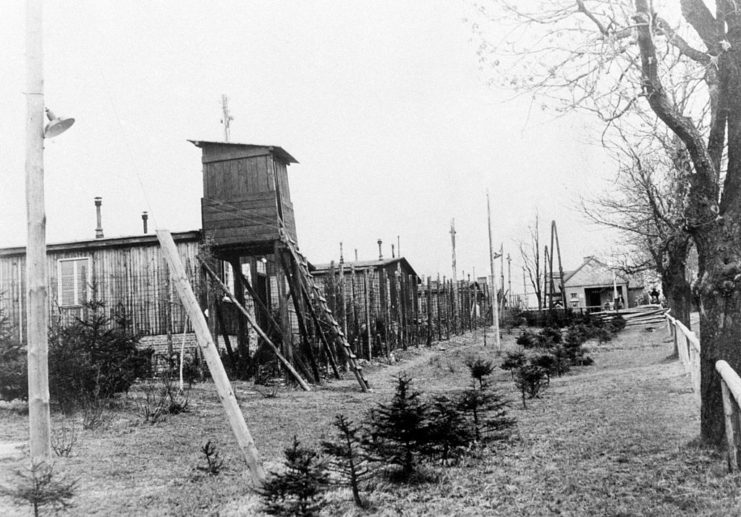
Ohrdruf concentration camp was constructed in November 1944, just outside of the German town of Gotha. It was a sub-camp of Buchenwald, located 30 miles away, and established to supply forced labor to aid in the completion of a railway track to a planned communications center in the basement of Mühlberg Castle.
Prisoners at Ohrdruf were to build a railway track by first digging tunnels through nearby mountains. Locals were hired to set off the explosions to break down the mountains, then the prisoners were to go in, collect the rocks and dig further. The tunnels were also intended to serve as an emergency shelter for the Führersonderzug, the Führer’s train and headquarters, if an evacuation from Berlin was necessary.
With forced labor came many dangers, as the prisoners had to work in poor conditions and weren’t supplied any protective gear. Additionally, many were malnourished and weak, and, as a result, suffered serious injuries or died while performing the work.
Death march to Buchenwald
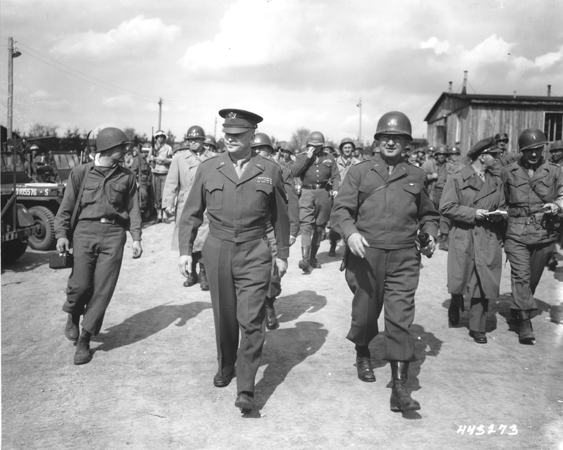
By March 1945, Ohrdruf had a prisoner population of approximately 11,700. This included French, Belgian, German, Polish, Hungarian, Czech, Russian, Latvian, Italian, Ukrainian and Yugoslavian prisoners. Homosexuals and Jewish people were also held there.
This massive population was forced to move by early April 1945, as the Allied forces advanced on the region. The German guards began to evacuate the prisoners by forcing them into a death march toward Buchenwald. Any who were too weak, ill or unable to participate were killed.
Eisenhower witnesses the horrors of the Holocaust firsthand
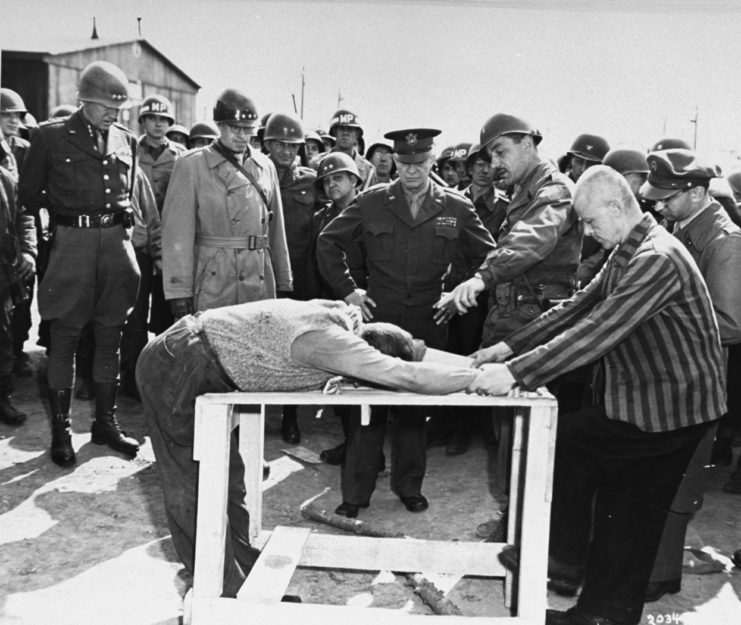
Ohrdruf was the first camp to be liberated by the American forces. Units with the 602nd Tank Destroyers’ Battalion and the 4th Armored and 89th Infantry Divisions were the first to enter. They were met with piles of the decomposing bodies, as well as the last surviving prisoners who were emaciated and in need of immediate medical attention.
On April 12, 1945, Gen. Eisenhower, accompanied by Gen. George Patton and Omar Bradley, walked through Ohrdruf completely unprepared. Up until this point, Eisenhower had been unaware of the horrors being committed by the Germans and the nature of the Holocaust.
While they toured the camp, the group came upon a burned-out pyre that still had the charred remains of prisoners. Clearly, the guards had rushed their attempts to cover up their crimes. Survivors also demonstrated the torture methods used by the guards.
Patton couldn’t enter one area of the concentration camp
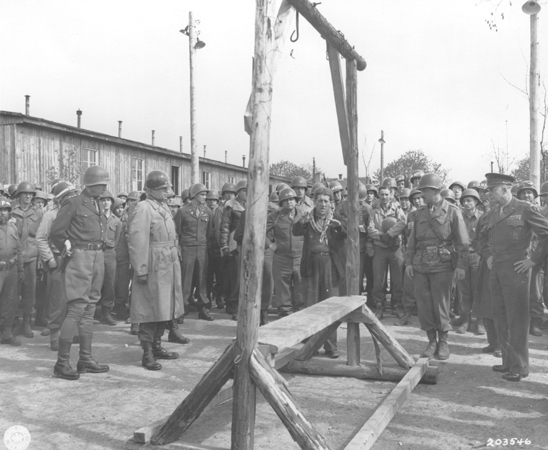
Further inspection of Ohrdruf led to the discovery of a shed that housed roughly 30 emaciated corpses. The bodies were covered with lime, in what seemed to be an attempt to cover up the foul smell. The sight and odor was so horrific that Patton was unable to enter the room.
Eisenhower explained this in a cable, saying, “In one room, where they were piled up twenty or thirty naked men, killed by starvation, George Patton would not even enter. He said that he would get sick if he did so. I made the visit deliberately, in order to be in a position to give first-hand evidence of these things if ever, in the future, there develops a tendency to charge these allegations merely to ‘propaganda.'”
American soldiers and Congressmen were called to bear witness
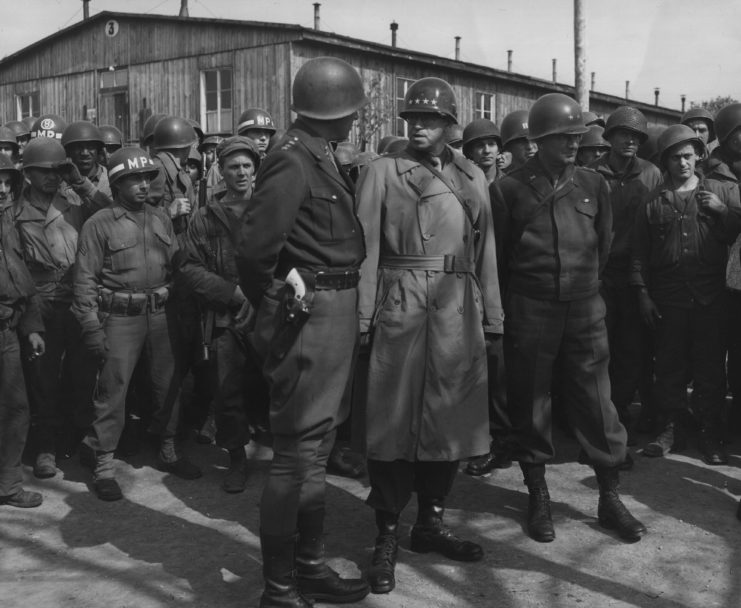
Utterly shocked by what he’d witnessed, Eisenhower worried there may come a day when the atrocities committed during the Holocaust would be rewritten, forgotten or denied. In order to preserve the truth, he took extra steps to expose the conditions of Ohrdruf.
He invited American media and Congressmen to visit the camp and observe the conditions for themselves. He then had pictures taken, to preserve the grueling sights. Additionally, he ordered all nearby American units not engaged in battle to come and observe the enemy’s crimes.
In what later became common practice for liberated concentration camps during the the Second World War, Eisenhower had German civilians living in the area tour Ohrdruf and bury the dead.
More from us: Looking Back At the Red Army’s Liberation of Auschwitz
Following the discovery and liberation of the concentration camp, Eisenhower succinctly said, “We are told the American soldier does not know what he is fighting for. Now, at least, we know what he is fighting against.”
The post Dwight D. Eisenhower Took Extra Measures to Ensure the Holocaust Was Never Forgotten appeared first on warhistoryonline.
Post a Comment
0 Comments